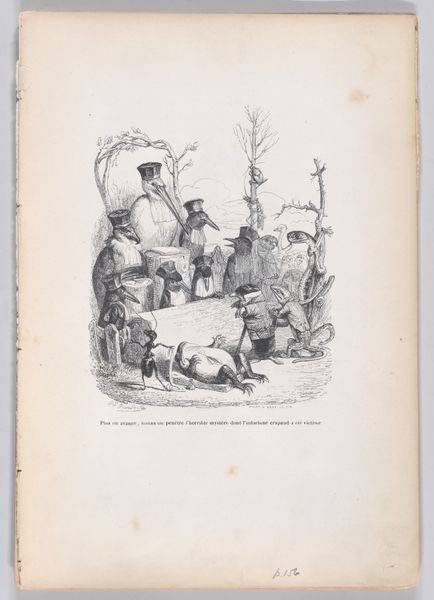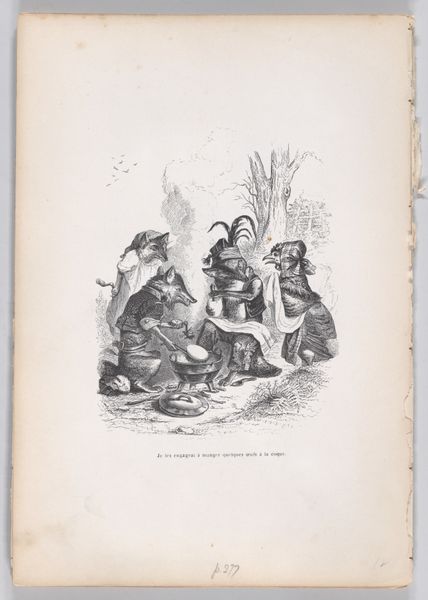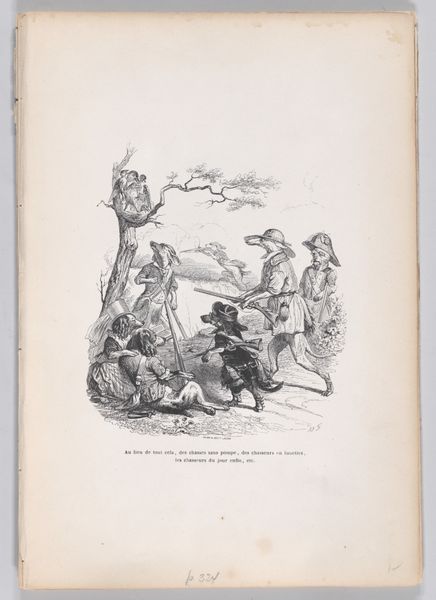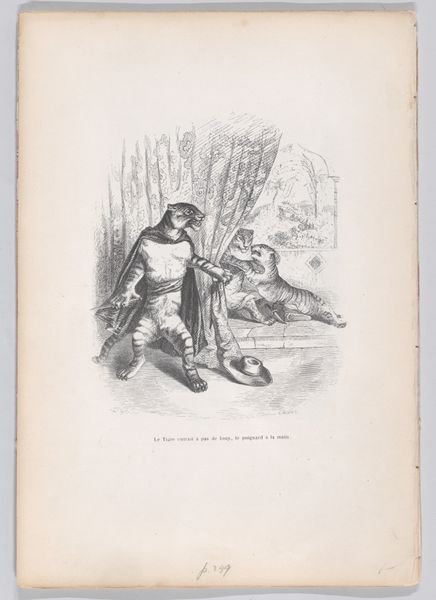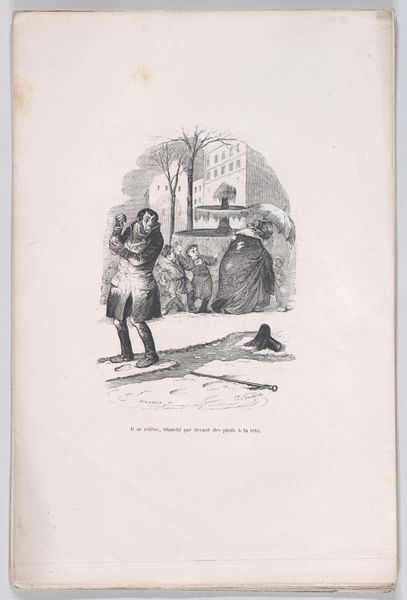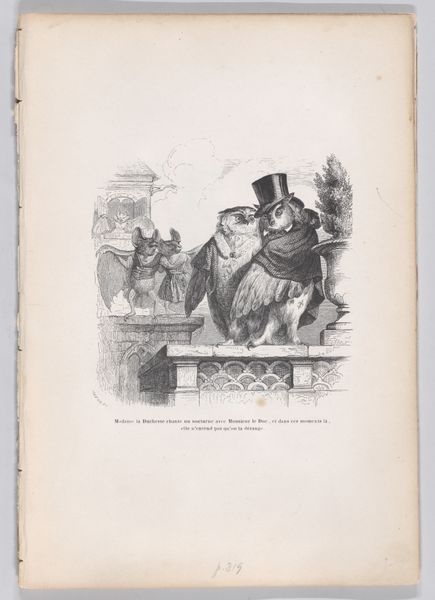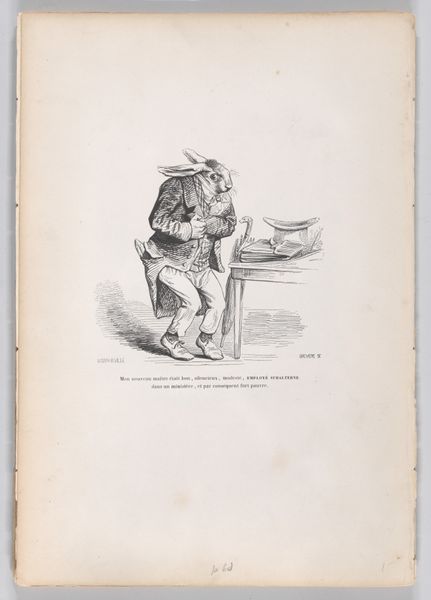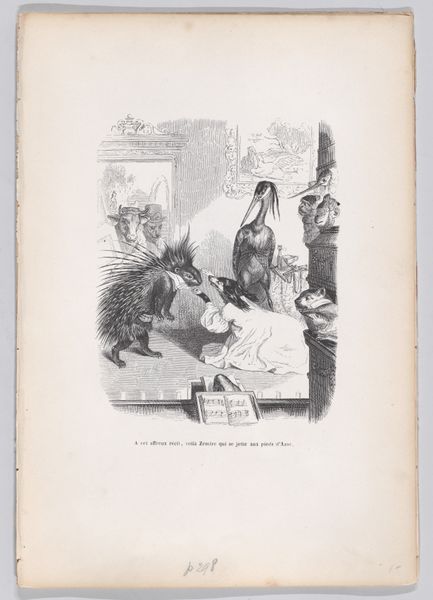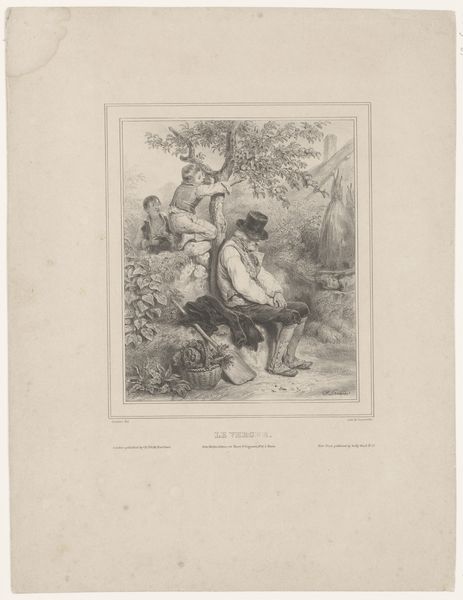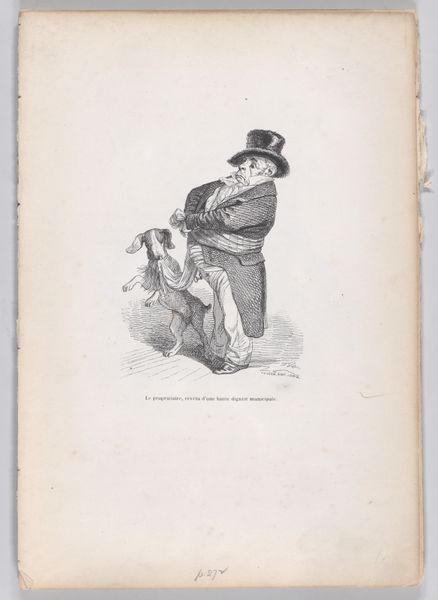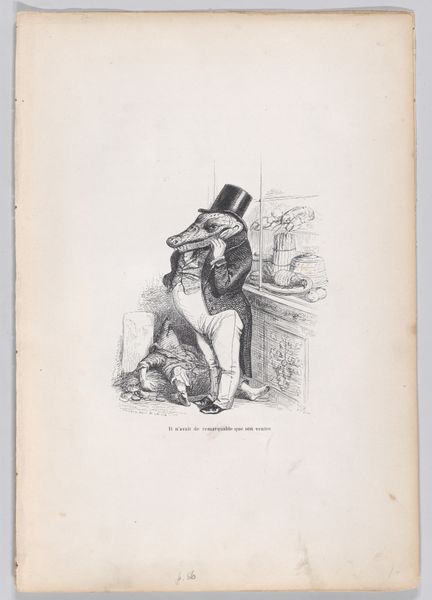
"There was once, in the camp there, two little hares with their sister, and then there was also a big bad bird who wanted to stop them from passing" from Scenes from the Private and Public Life of Animals 1832 - 1852
0:00
0:00
drawing, print, engraving
#
drawing
#
fairy-painting
#
narrative-art
# print
#
figuration
#
romanticism
#
sketchbook drawing
#
engraving
Dimensions: Sheet: 10 3/8 × 7 3/16 in. (26.3 × 18.2 cm)
Copyright: Public Domain
Curator: At first glance, it’s a peculiar scene. A somewhat sinister-looking owl, dressed in finery, faces off against three rabbits also adorned in clothing. What do you make of it? Editor: Well, the image certainly evokes a sense of unease, despite its almost whimsical subject matter. The anthropomorphic figures create a slightly unsettling narrative, like a fable gone awry. Curator: Indeed. This lithograph with touches of engraving, produced by J.J. Grandville between 1832 and 1852, is titled "There was once, in the camp there, two little hares with their sister, and then there was also a big bad bird who wanted to stop them from passing," from his series *Scenes from the Private and Public Life of Animals.* It's currently held in the collection of the Metropolitan Museum of Art. Editor: Ah, Grandville! His works are often loaded with social and political commentary disguised as animal tales, right? Given the Romantic period context, could this reflect anxieties about authority figures or perhaps class tensions? The owl looks quite aristocratic, doesn’t it? Curator: Precisely. The animal symbolism Grandville employs allows for sharp social critiques. Owls often represent wisdom, but here, the owl's stern gaze and elaborate attire suggests a parody of authority. The rabbits, potentially representing the common folk, seem intimidated. Editor: And the composition further emphasizes this power dynamic. The owl dominates the frame, while the rabbits appear almost trapped by its presence. Even the landscape feels barren and oppressive. Curator: Observe also the precise details of the engraving – the texture of the owl’s feathers, the folds in the rabbits’ clothing. Each element is carefully rendered to contribute to the overall narrative. Editor: It’s intriguing how he uses seemingly innocent imagery to convey darker themes. What initially reads like a children's story quickly transforms into a commentary on societal imbalances and the abuse of power. It’s almost Kafkaesque. Curator: A chilling tableau of dominance, certainly, and a clever visual metaphor for the social dramas unfolding in 19th-century France. Editor: Definitely leaves one pondering the ongoing relevance of such symbolic critiques, even today. The piece highlights the capacity of animal symbolism to cut straight through cultural attitudes. Curator: It gives one a shiver when considering the nature of cultural memory, indeed.
Comments
No comments
Be the first to comment and join the conversation on the ultimate creative platform.
